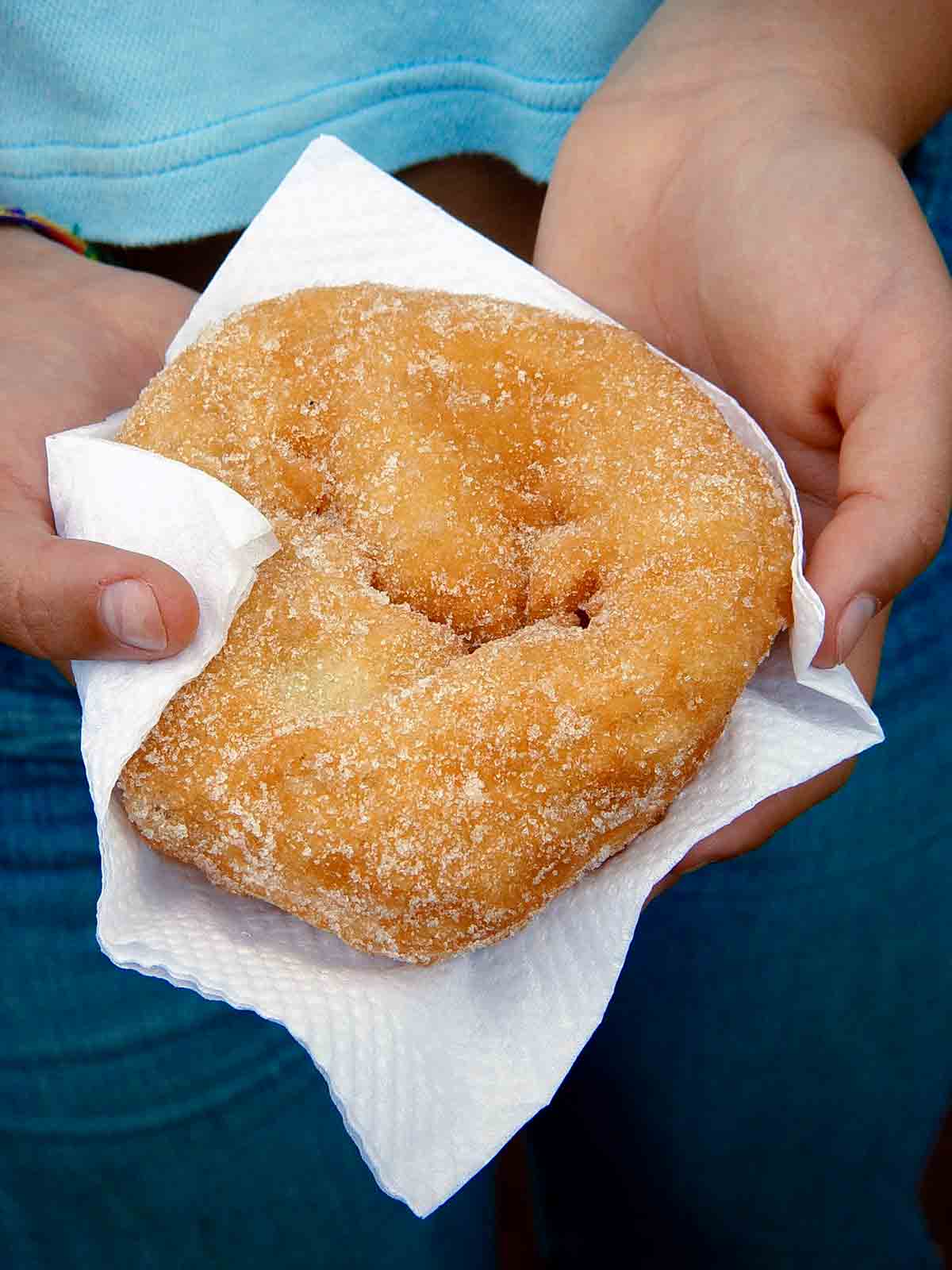
This recipe, adapted from the one my dad’s mom used to make in the Azores, has a flood of memories attached to it. I would sleep over at her house many a Friday night and on Saturdays she’d make these for my cousins, Fatima and Joe, and me. Hot out of the sugar-cinnamon bowl is the only way to eat them. In the Azores, some cooks shape these over their knees until they’re practically the size of lunch plates, just like my grandmother used to do. Others stretch and flop them out in their hands. I’ve made these smaller so they’re easier to work with, and fiddled with the recipe a touch, but beyond that, welcome to my childhood.–David Leite
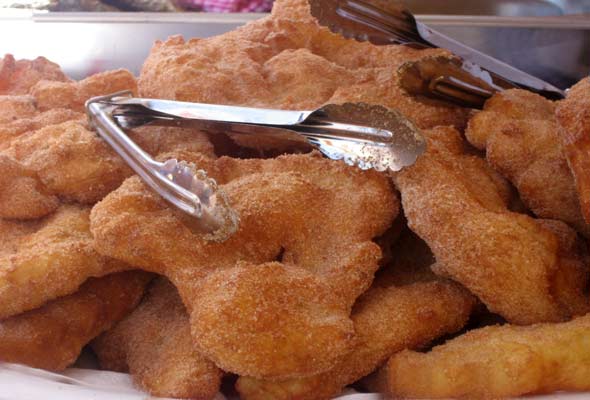
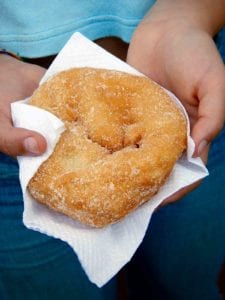
Malassadas | Portuguese Doughnuts
Equipment
- Deep-fry or candy or instant-read thermometer
Ingredients
For the doughnuts | malassadas
- 1/2 cup whole milk
- 2 tablespoons unsalted butter, plus more for the bowl
- 3/4 teaspoon kosher salt
- 1 package active dry yeast, (2 1/4 teaspoons or 1/4 ounce)
- 1/3 cup plus 1 teaspoon granulated sugar
- 2 tablespoons warm water, 110°F (43°C)
- 3 large eggs
- 3 1/2 cups all-purpose flour, plus more for the work surface
- Nonstick cooking spray
- Vegetable oil, for frying
For the cinnamon sugar
- 1 cup granulated sugar
- 1/2 teaspoon ground cinnamon
Instructions
Make the doughnuts | malassadas
- Heat the milk, butter, and salt in a medium saucepan over medium-high heat, stirring frequently, until it just begins to steam and form bubbles around the edges, about 5 minutes. Remove from the heat and let cool until lukewarm.
- Meanwhile, in a small bowl, dissolve the yeast and 1 teaspoon sugar in the warm water. Let stand until foamy, about 10 minutes.
- In the bowl of a stand mixer fitted with the paddle attachment or with a hand mixer in a large bowl, beat the remaining 1/3 cup sugar and the eggs on medium-high until thick and luscious looking, about 5 minutes.
- Switch to the dough hook, add the milk mixture, the yeast mixture, and the flour, and mix on low speed until a soft dough forms, about 7 minutes, adding more flour if needed. The dough should be just slightly tacky but not sticky.
- Turn the dough onto a lightly floured work surface, shape into a ball, and place in a lightly buttered large bowl. Cover with plastic wrap and let rise in a warm, draft-free spot until double in size, about 2 hours.
- Lightly coat a 13-by-18-inch rimmed baking sheet with cooking spray and turn the dough onto the pan. Press and poke it with your fingers, much like making focaccia, to help stretch it until it's about 1/2 inch thick. Lightly coat the top of the dough with cooking spray, loosely cover the pan with plastic wrap, and let the dough rest at room temperature until double in size, 1 to 1 1/2 hours.
Make the cinnamon sugar
- Mix together the sugar and cinnamon in a shallow bowl.
Fry the doughnuts | malassadas
- Fill a medium saucepan with 3 inches of oil and heat over medium-high heat until it reaches 350°F (177°C) on a deep-fry or candy or instant-read thermometer. Monitor the heat to keep a steady temperature.
- Using scissors or your hands, cut or pull a 2-to-3-inch piece of dough from the baking sheet and stretch it into a 4-to-5-inch circle, then lower it into the oil and fry, turning frequently, just until golden brown on both sides and cooked through, 45 seconds to 1 1/2 minutes, depending on the size. Drain the doughnut on paper towels for 30 seconds and then toss in the cinnamon sugar. Repeat with the remaining dough. Devour warm.
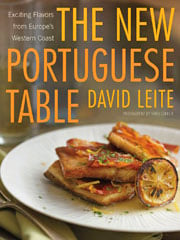
Nutrition
Nutrition information is automatically calculated, so should only be used as an approximation.
Recipe Testers’ Reviews
I think I have a love for Portuguese desserts because I seem to try my hand at a different Portuguese recipe every Valentine’s Day. This year, I made these malassadas, and they did not disappoint!
The dough came together exactly as the instructions say. My dough was tacky to the touch. I made a mistake with the first rise and only let it go 1 1/4 hours…ooops! I guess I was overly anxious to get these in my tummy and I miscalculated the 2-hour rise. Regardless of that fact, my dough did continue to double on the second rise and these were a cinch to fry and coat with sugar. I bet if I let the first rise complete the full 2 hours, my malassadas would have been slightly more puffy and airy, but these were still really delicious and enjoyed by the family.
I used olive oil to fry these and they weren’t oily at all. I coated a half batch with plain sugar and a half batch with cinnamon sugar. They were both great.
I plan on making these again. Thanks to David for sharing his childhood recipe!
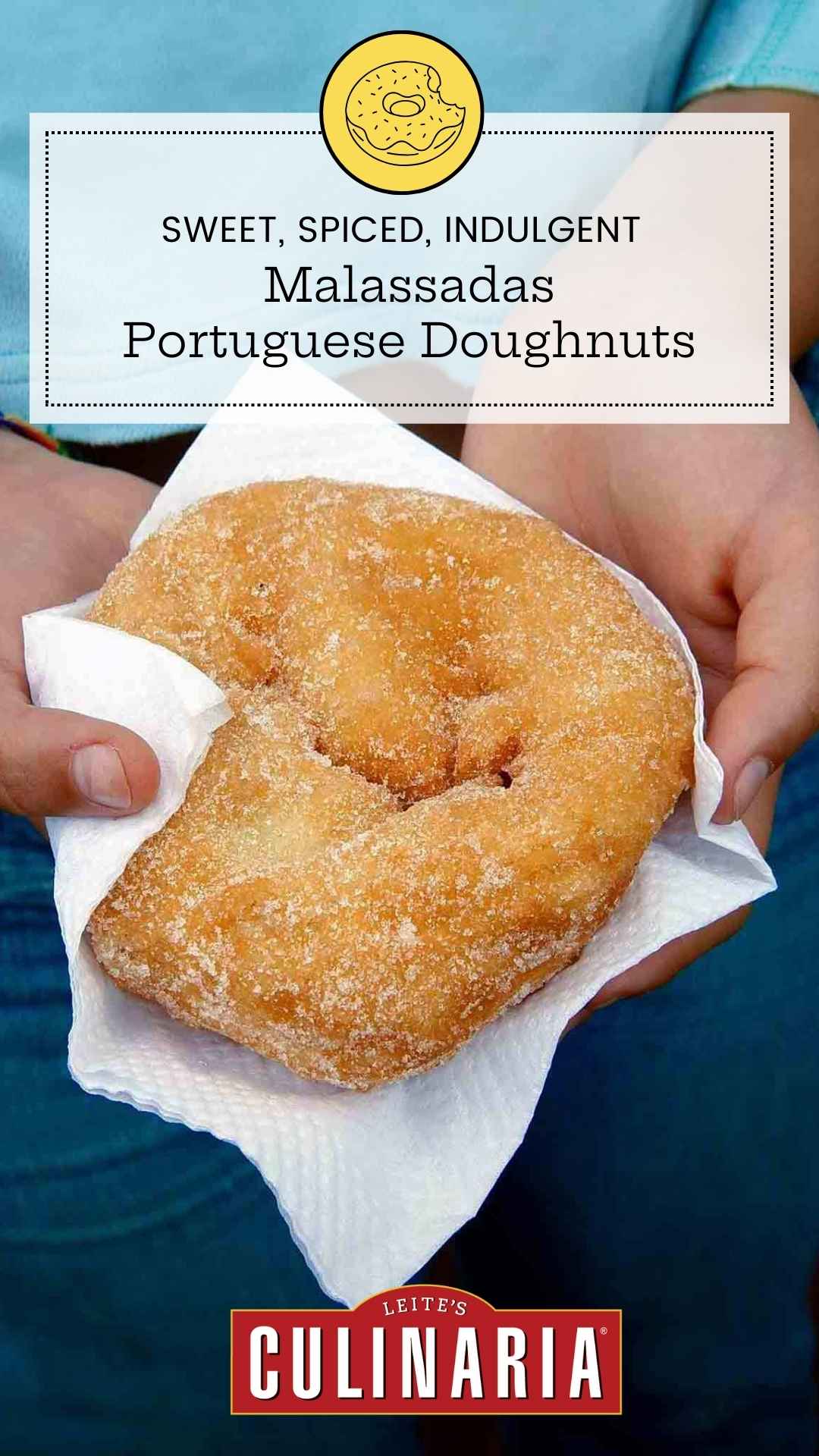
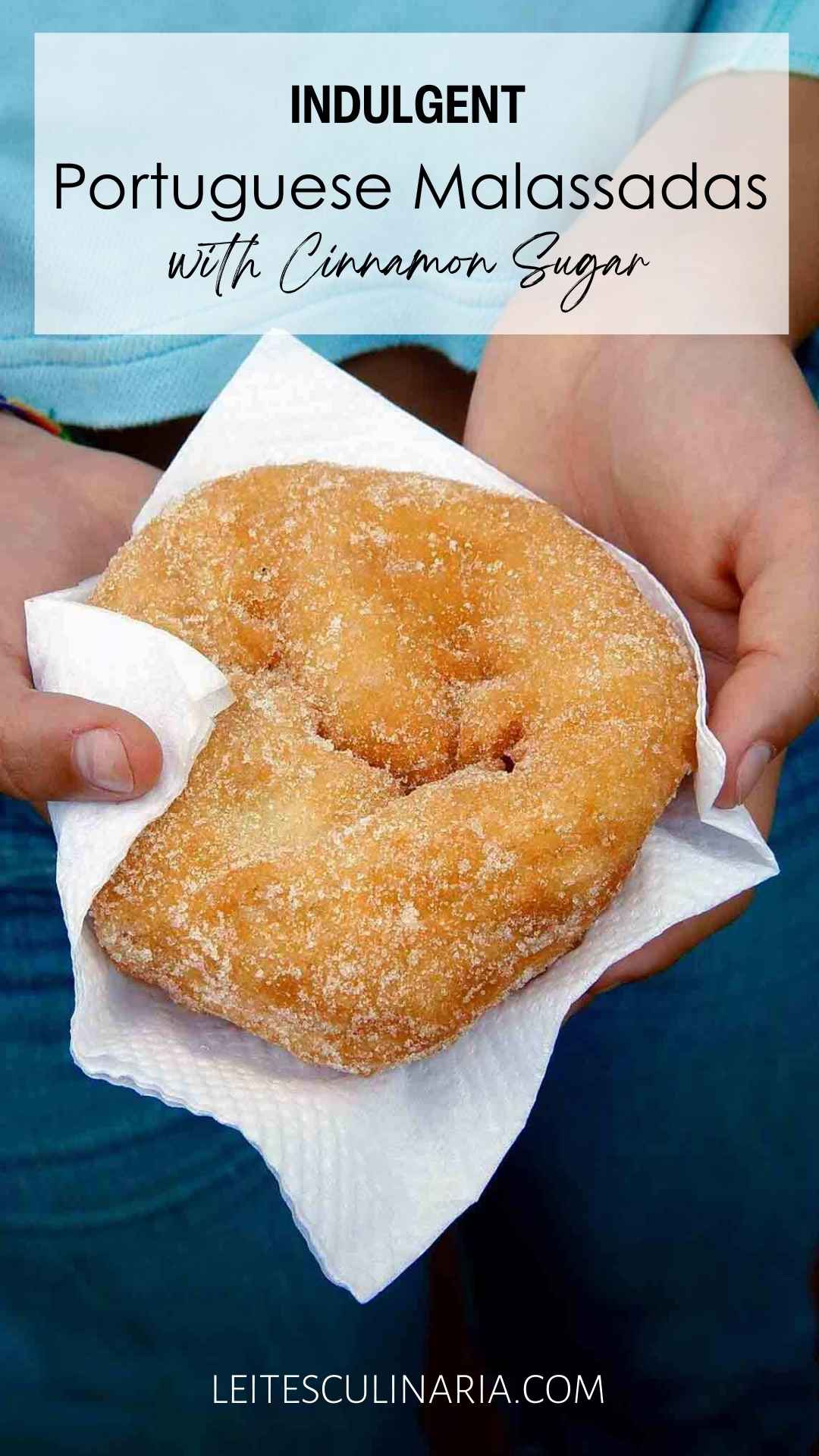
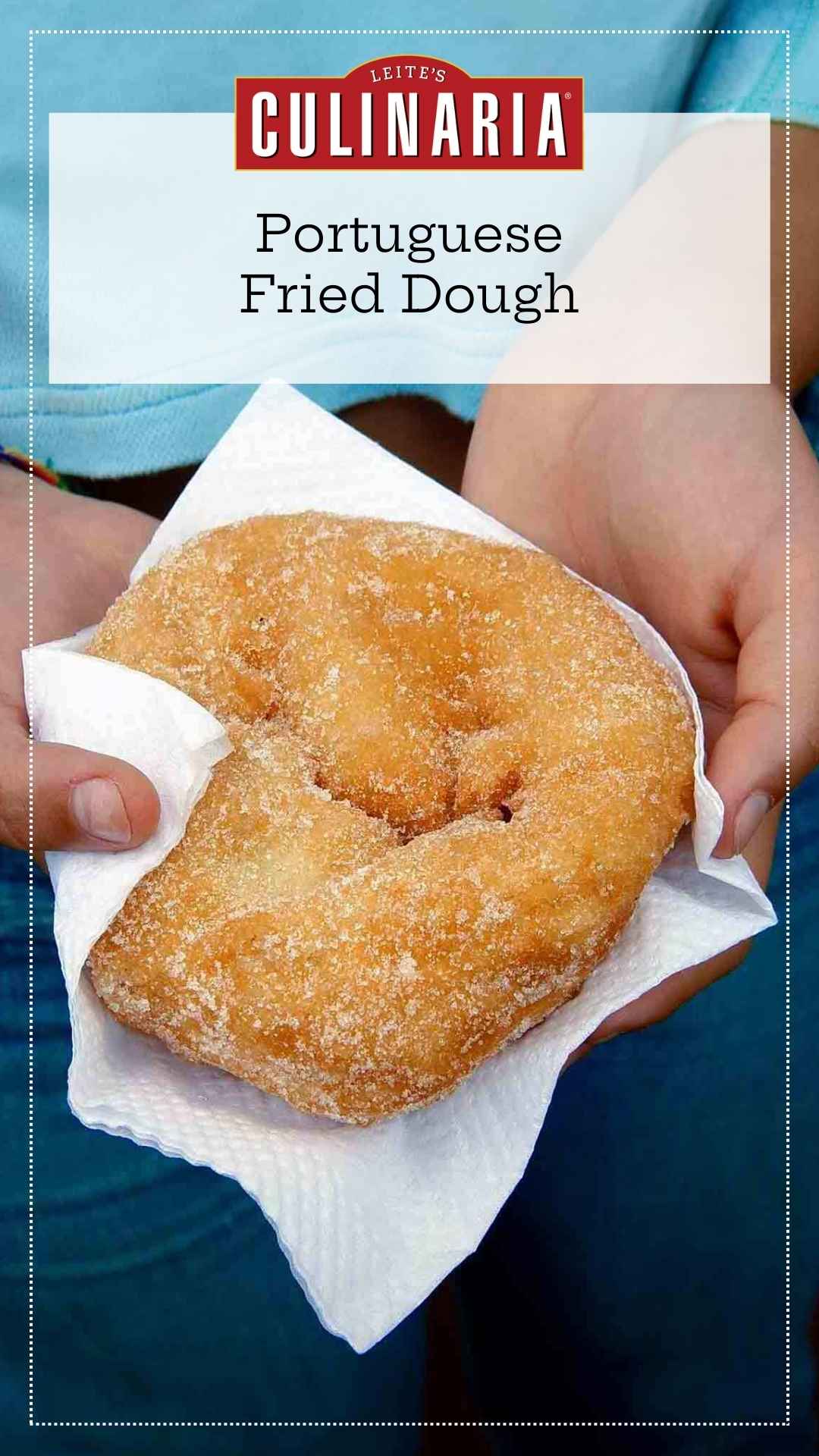
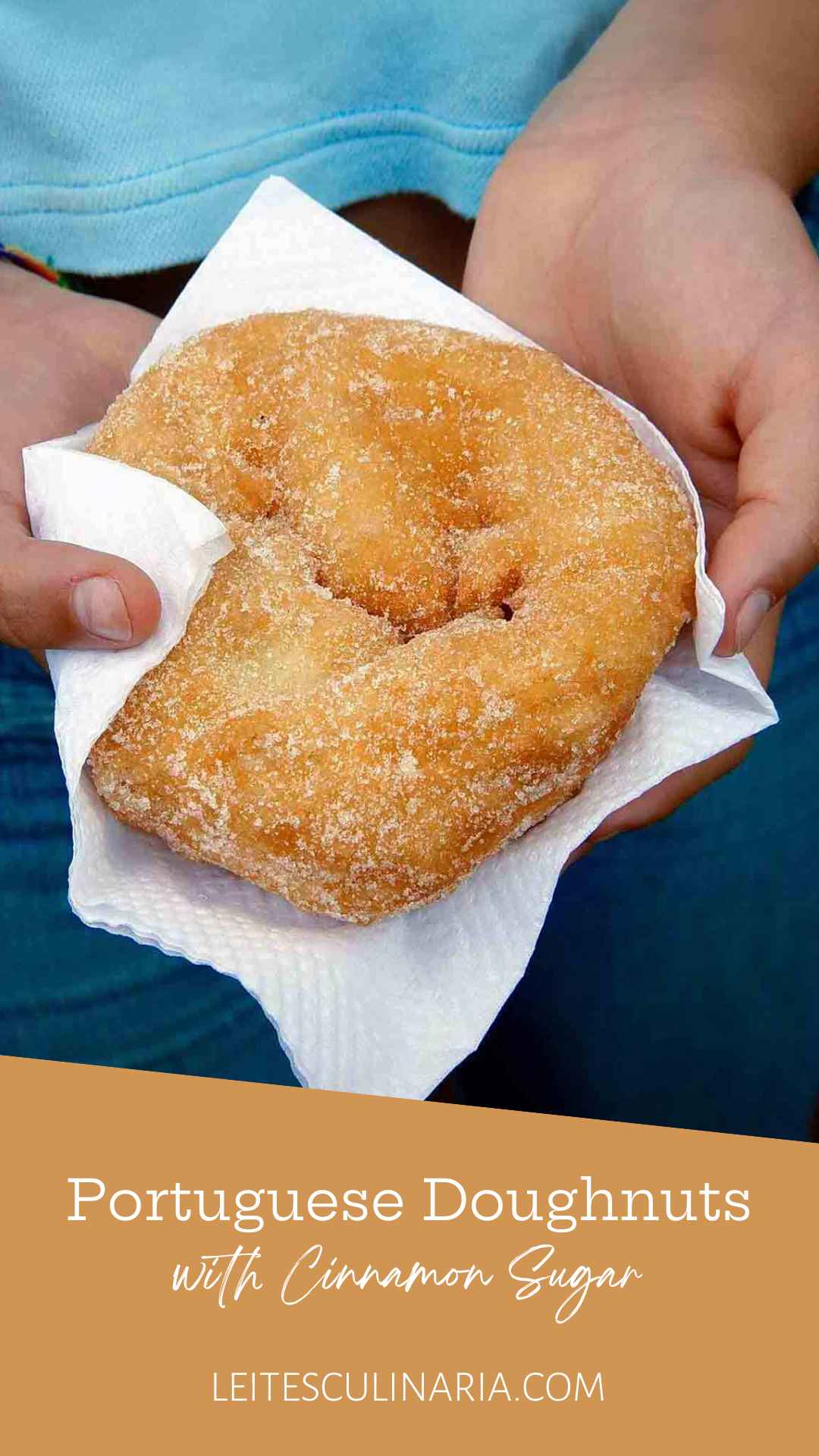
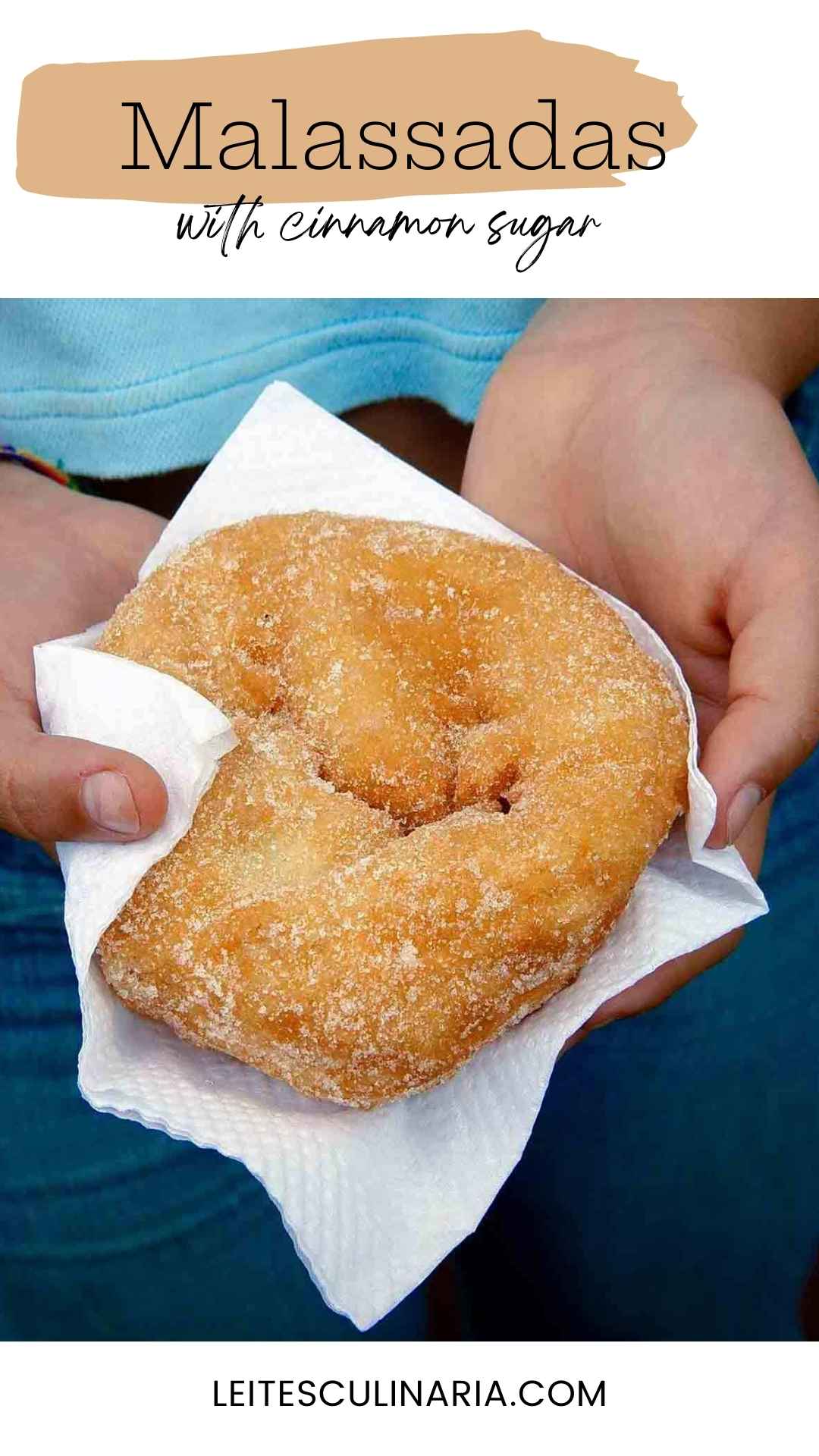
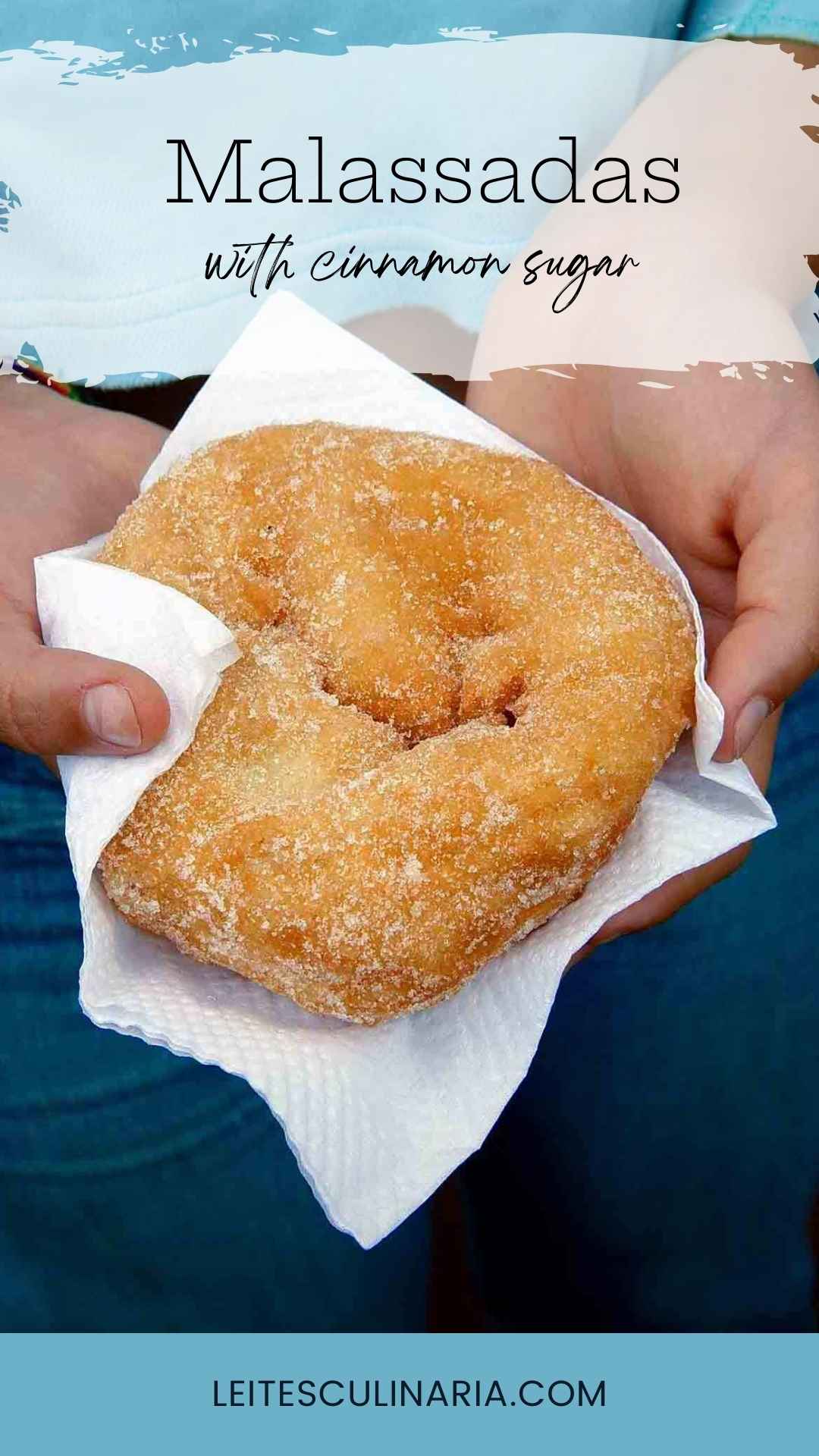










I would love to see your recipe Maria. Thank you.
I am from Sao Miguel and have first hand experience helping my mom make these. I’m not sure which island this recipe is from but I NEVER saw my mom stretch it over her knees or top it with anything besides granulated sugar. Growing up in Fall River, malassadas were available just about any Sunday from the local bakeries or the Portuguese churches and they were in the same style as my mom’s. Will share recipe if you’re interested.
Maria, hello! I, too, am from Fall River, MA, and I remember eating these all the time. Both of my grandmothers along with all my aunts made them. One of my grandmothers was aware of some cooks using their knee to shape them. I’d love to see your recipe.
Aloha Dave,
Love following your post. I’m a Hawaii poi dog (multi-ethnic) but my Portuguese Ohana was from São Miguel Achada. My mom and Vovo would make Malassadas/fihlose for holidays. She used to make plenty for Fat Tuesday for the family and Pão Doce/Massa Souvada.
I am the torch bearer for all things Portuguese in our family food wise fifth generation Pacheco recipes. So from time to time, I make linguiça and chouriço So coming from Hawaii to California (where I grew up) and back to Hawaii to see your grandma’s Malassadas brought back plenty memories of the Festa time when young.
Oh, BTW, my mom laughed about the knee comment and my grandma said the ladies with the fat knees made the biggest ones. LOL! So funny and we did both sugar and cinnamon sugar.
So seeing yours confirms that ours are more authentic and traditional because ours are flat and rustic not round like a Pão de Belém or Leonard’s bakery here on Oahu (Ono though), but that’s what locals are used to.
But this was a pleasure. If you’re ever on Oahu would love to talk story over some malassadas and coffee (I’ll make em).
Obrigado!
Glenn
Glenn, so good to hear from you. Yes, this is the authentic version. The ones in Hawaii, especially Leonard’s–which, BTW, are awesome–are a bit Americanized. And I just might take you up on your offer when in Hawaii next.
hi maria. my name is ana crespo. I used to live in fall river so I know exactly what you are taking about. is there anyway you could email me the recipe? I moved with my husband and children and want my kids to grow up with the same traditions I had as a kid. my email is acrespo1212@gmail.com. also if you have the recipe for sweet bread, rice pudding and queisadas de nata that would be fantastic any other recipes you would like to forward I would love to try 🙂 thank you
Maria, I would love the recipe. Growing up with the donuts was always a treat and a party for us kids.
David, I am going to try this recipe because my grandmother used to make us this soft donut and put sugar on it. I first tasted them when I was 8 yrs. old when my father took me to Portugal to meet his family. I pray; this is the same recipe.
Maria…..can you please share your recipe?
Yvette, I hope so, too! But I fear there are as many malassada recipes as there are grandmothers! Best of luck. Please tell me how they turn out.
I want to make these for my daughter’s wedding. Can they be cooked ahead of time and frozen? And if so, do I put the sugar on them before freezing or after i take them out? Thanks.
Tracy, some cooks do fry then freeze malassadas, but, to me, they never taste same. Any fried dough is best eaten right then and there. Obviously, it would be hard to make a whole raft of malassadas on the spot at a wedding. My advice is to fry up a batch, sugar half of the doughnuts, let them all cool, then freeze them. Defrost them and see if either version works for you.
My family is from the Azores and we would freeze these all the time. When I was in college my mother would make these in large batches and freeze them so I could take ziploc bags full to school with me. They freeze very well and last months in the freezer. The key is to sugar them first, let them cool and then wrap them in aluminum foil and put in a freezer-proof ziploc bag before freezing. We would do 2-3 malassadas per foil wrap so you had serving size portions ready. When you want one, pull it out of the freezer still wrapped in foil, let them sit for a few minutes then pop them into a toaster oven or regular oven at about 300-350 still in the foil. They come out just as crispy on the outside and soft and tasty on the inside. I usually sprinkle with a bit more sugar and cinnamon after since much of the original sugar will melt in. Nothing compares to freshly made malassadas, but this is not a bad substitute when you can’t have them fresh!
I grew up in London and when I was a child every Saturday morning in our local market a man would be there with his fancy cart and huge cauldron of oil and container of batter and would make what we called fritters which came out oval, puffy with crinkled edges. I’ve tried to make this batter and have followed several recipes but cannot get those lovely little air-filled fritters. Many years ago I was in Framingham, Mass. at a restaurant called The Old Mill where they served the exact same thing that I used to have as a child – should have asked for their recipe! Any ideas??
Irene, if it was in Framingham, MA, there’s a good chance that it was malassadas. Have you tried this recipe?
Is it the one you already have posted – they do not look the same.
Irene, yes, it’s the one above. But the shape of the doughnut is all in how you stretch and handle to dough. Here are some other images of malassadas. Again–all in the shaping of the dough.
Now, there are sohnos, which are pretty much the same dough, again shaped differently.
These fritters were in batter form – not stretchy dough. A deep ladle would be dipped into the batter and then ladled batter into the hot oil and, removinh ladle as the fritter formed in the oil.
Ah, Irene. Then I’m not exactly sure that they are. They don’t sound Portuguese. I’ll keep an eye out and see if I come across anything.
My mom used to freeze them, as she would always make big batches. The sugar should always go on a malassada when they’re hot out of the oil so the sugar sticks. Once cooled, then u can freeze them. Same great taste still even after a few days.
Liz, thanks so much for sharing your insights and suggestion! Greatly appreciate both!